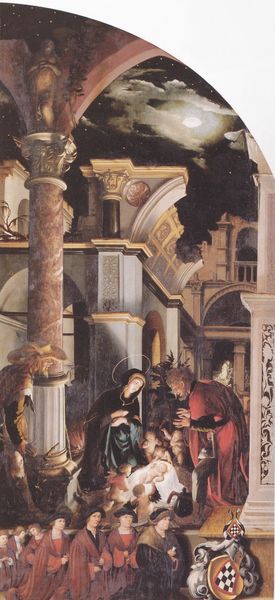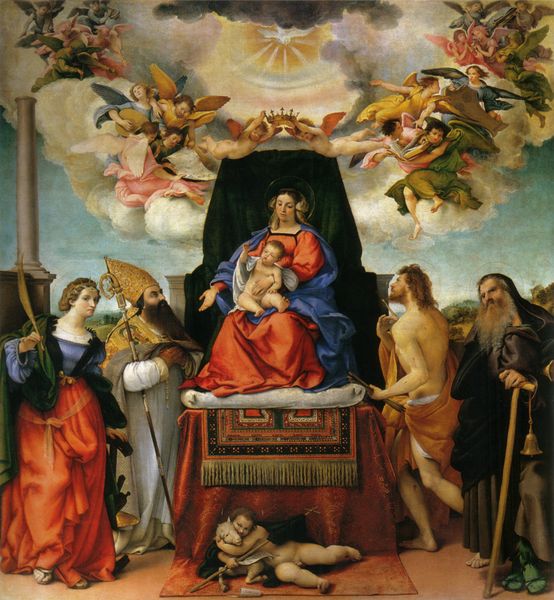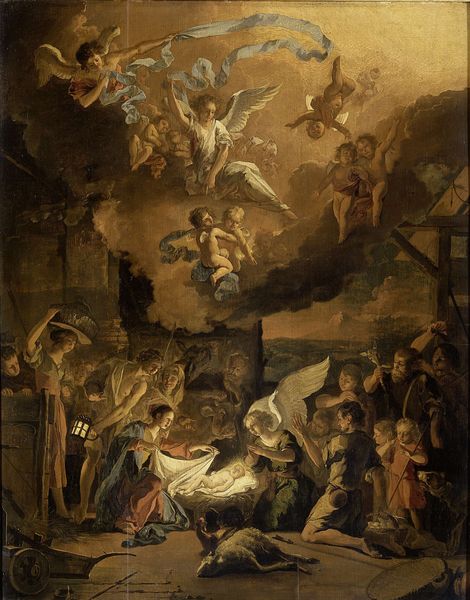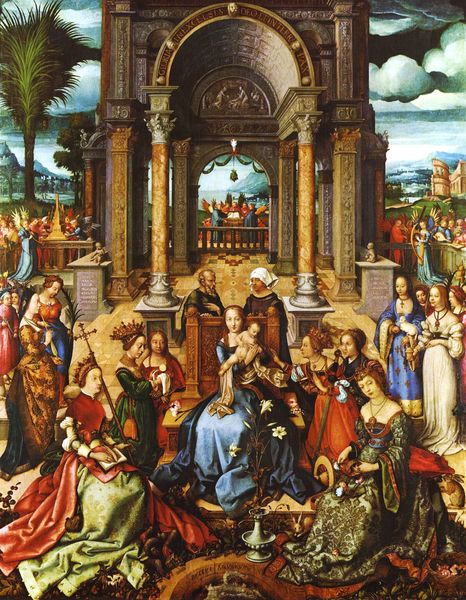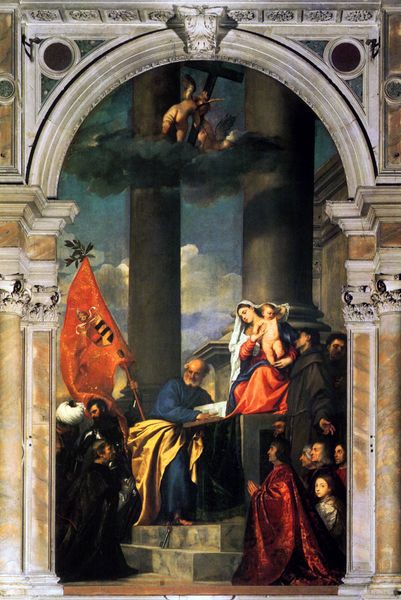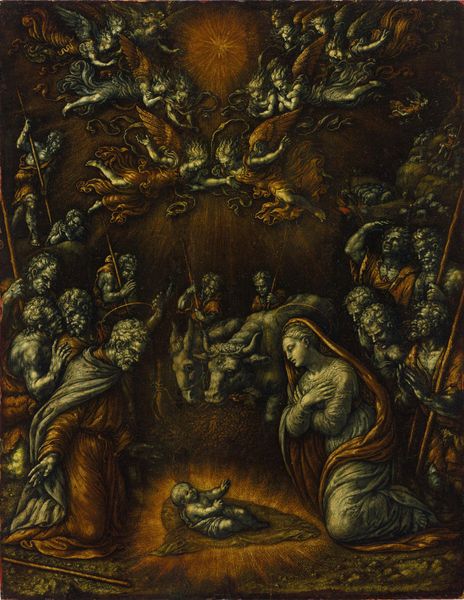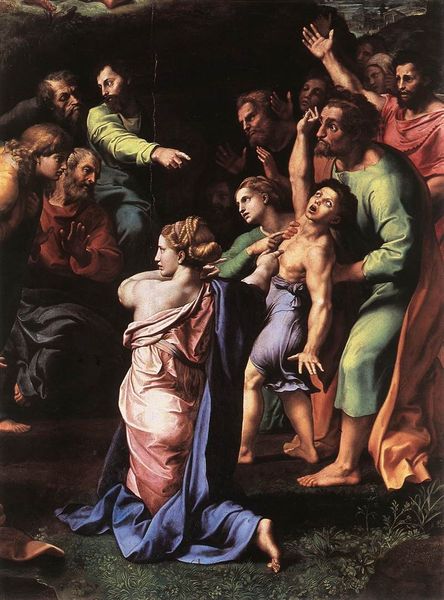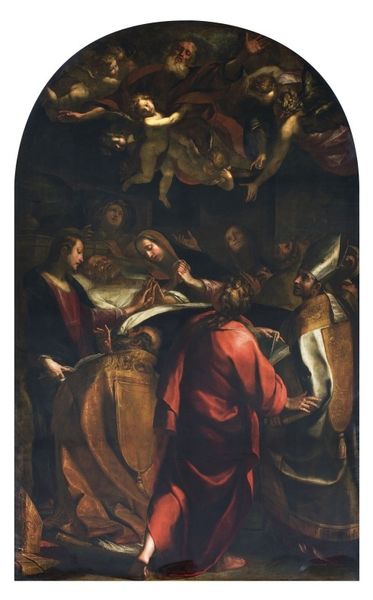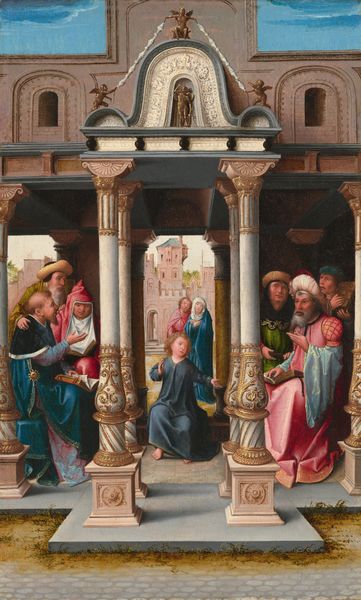
Altar polyptych of San Bartolomeo, Bergamo, main panel: Enthroned Madonna with Angels and Saints - Alexander of Bergamo, Barbara, Roch, Dominic 1516
0:00
0:00
lorenzolotto
Accademia Carrara, Bergamo, Italy
painting, oil-paint
#
portrait
#
high-renaissance
#
painting
#
oil-paint
#
figuration
#
form
#
oil painting
#
child
#
group-portraits
#
arch
#
christianity
#
history-painting
#
italian-renaissance
#
angel
#
christ
Dimensions: 250 x 520 cm
Copyright: Public domain
Curator: Here we see Lorenzo Lotto's main panel from his "Altar polyptych of San Bartolomeo, Bergamo" created around 1516. Oil paint brings this High Renaissance vision to life. Editor: It's incredibly regal and hierarchical, almost aggressively so. The elevated Madonna enthroned is certainly the focus, but all of those saints crowding around her seem to clamor for a piece of her reflected glory. Curator: You know, Lotto was working in a fascinating period in Bergamo. The city was under Venetian rule, which fostered an environment of artistic exchange and competition. Commissions, like this polyptych, reinforced religious and civic identities. Editor: Precisely, and I think the way Lotto depicts these saints provides a crucial lens. Notice how Alexander of Bergamo and the other local figures almost jostle for space, visually asserting the city's claim to religious importance and its proximity to divine power. Who gets represented, how, and where? Curator: The composition itself also draws from earlier altarpieces, updating traditional formulas to emphasize grandeur through this centralized perspective and detailed ornamentation. Editor: The symmetry is undeniably powerful. The angels poised to crown the Madonna literally elevate her position in the visual hierarchy, solidifying existing power structures. Do we have to admire beauty if it’s propagating something regressive? Curator: I'd argue we have to acknowledge the socio-political currents to appreciate the painting. The placement within a church in Bergamo also reinforces its connection to the local religious practices of the era. This wasn't meant as an isolated "artwork"; it served a clear purpose. Editor: Yes, and in thinking about its purpose, it forces a crucial dialogue: What power dynamics are at play here? The painting presents a heavenly court, but whose interests are being served? Curator: I'm left thinking about the enduring power of these iconic images to shape social values and reinforce hierarchies of its time, as well as now. Editor: And I’m struck by the challenge of how we engage with artwork that are undeniably beautiful yet propagate historical narratives we need to deconstruct. A true test of critical viewership.
Comments
No comments
Be the first to comment and join the conversation on the ultimate creative platform.
